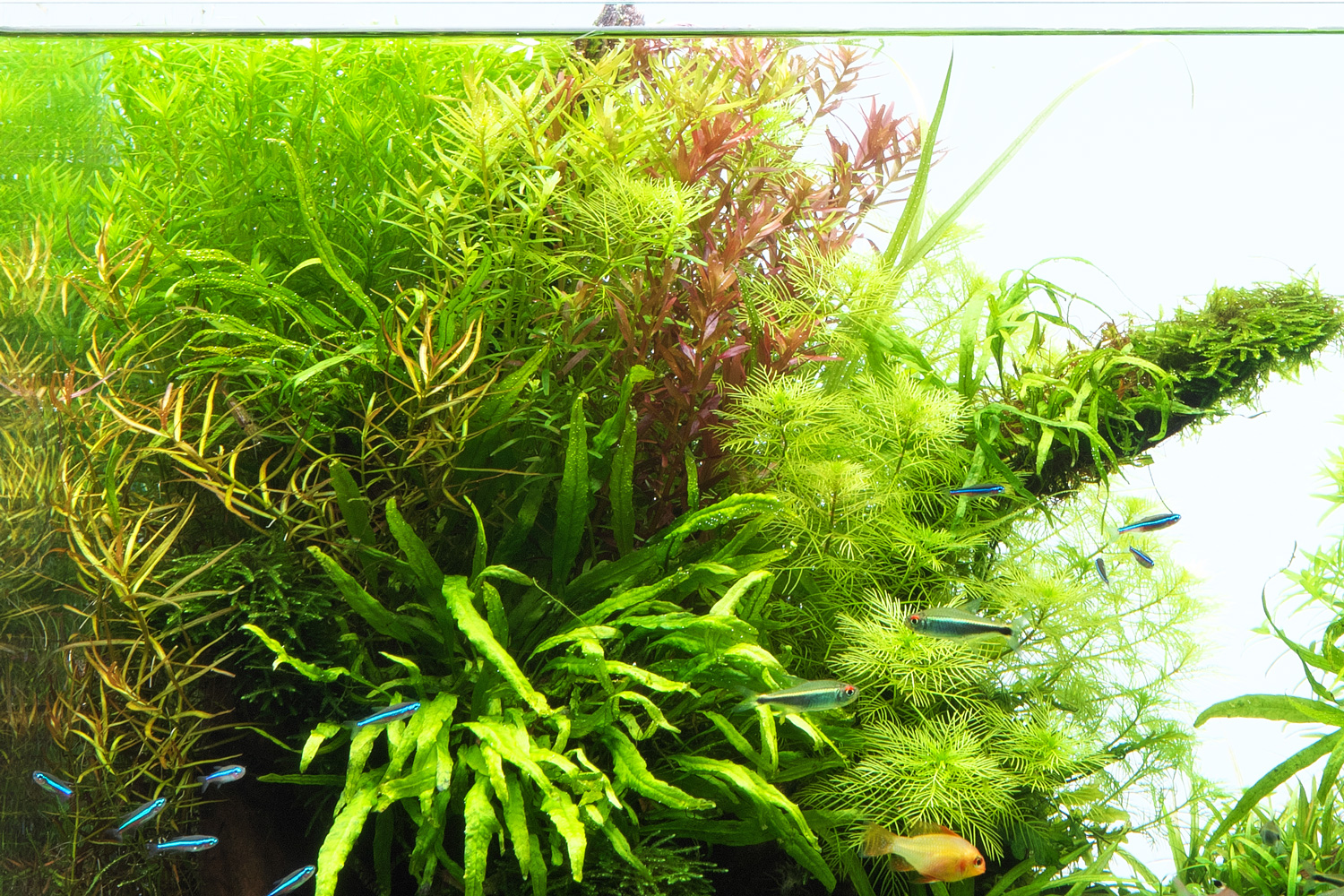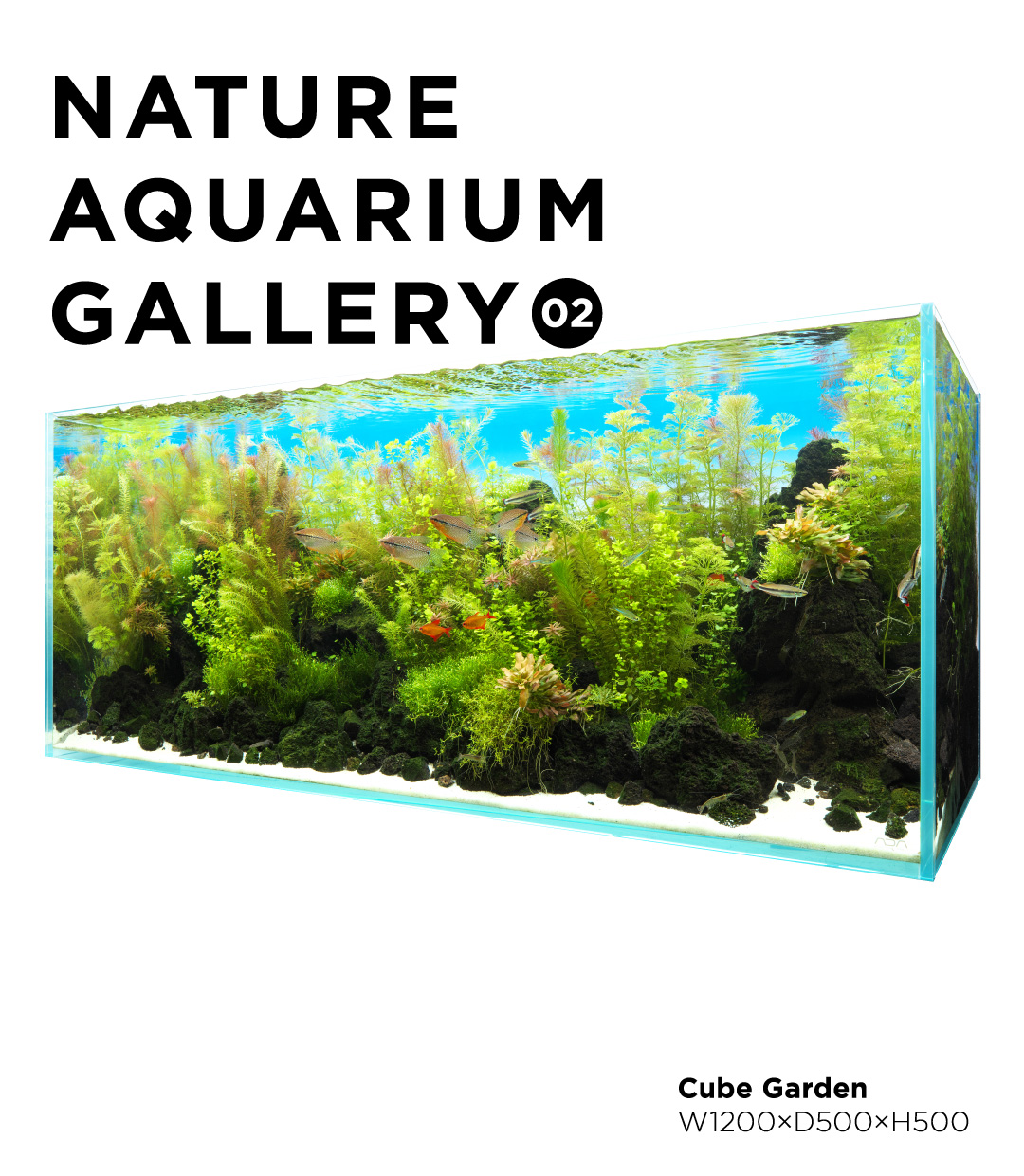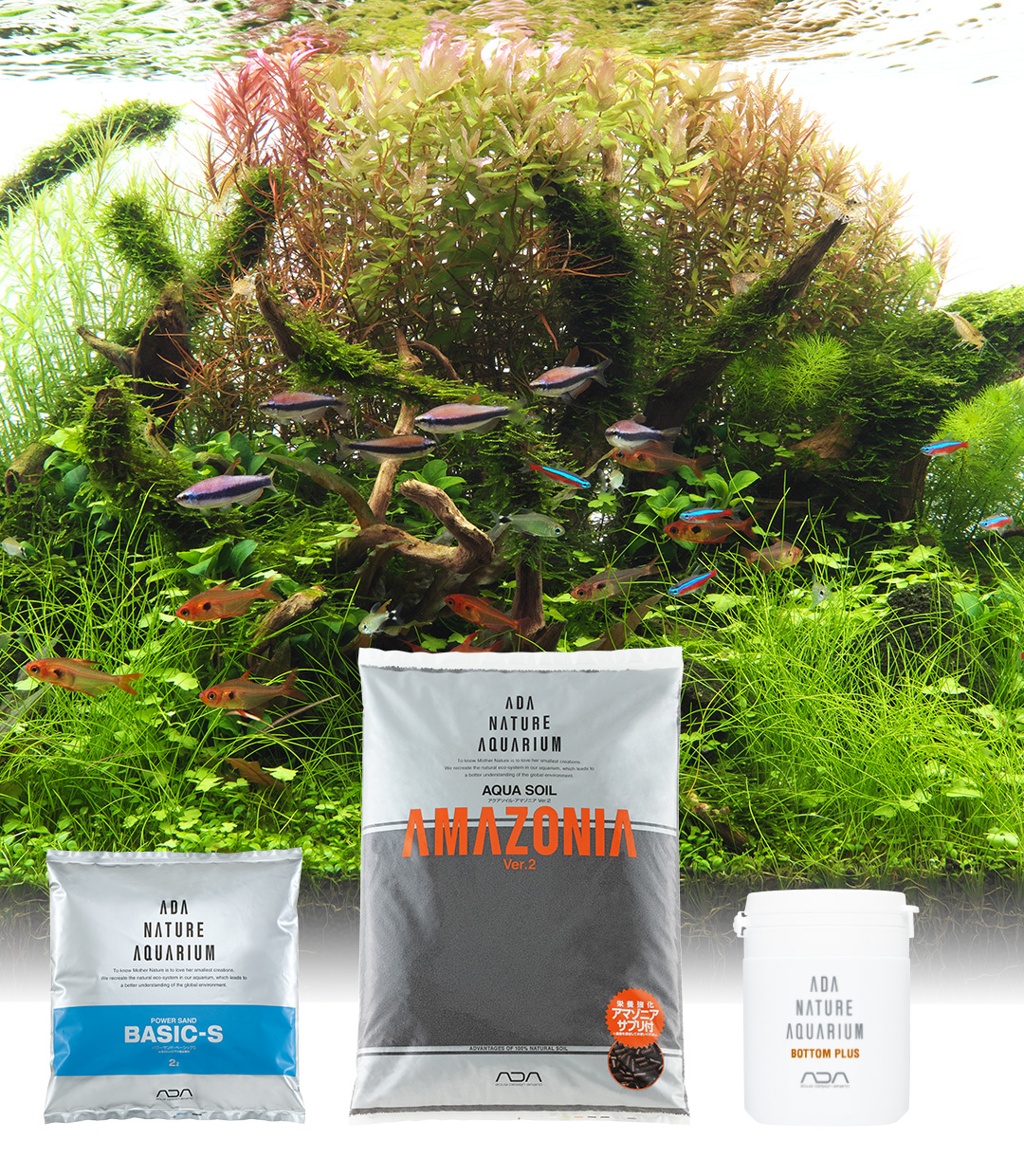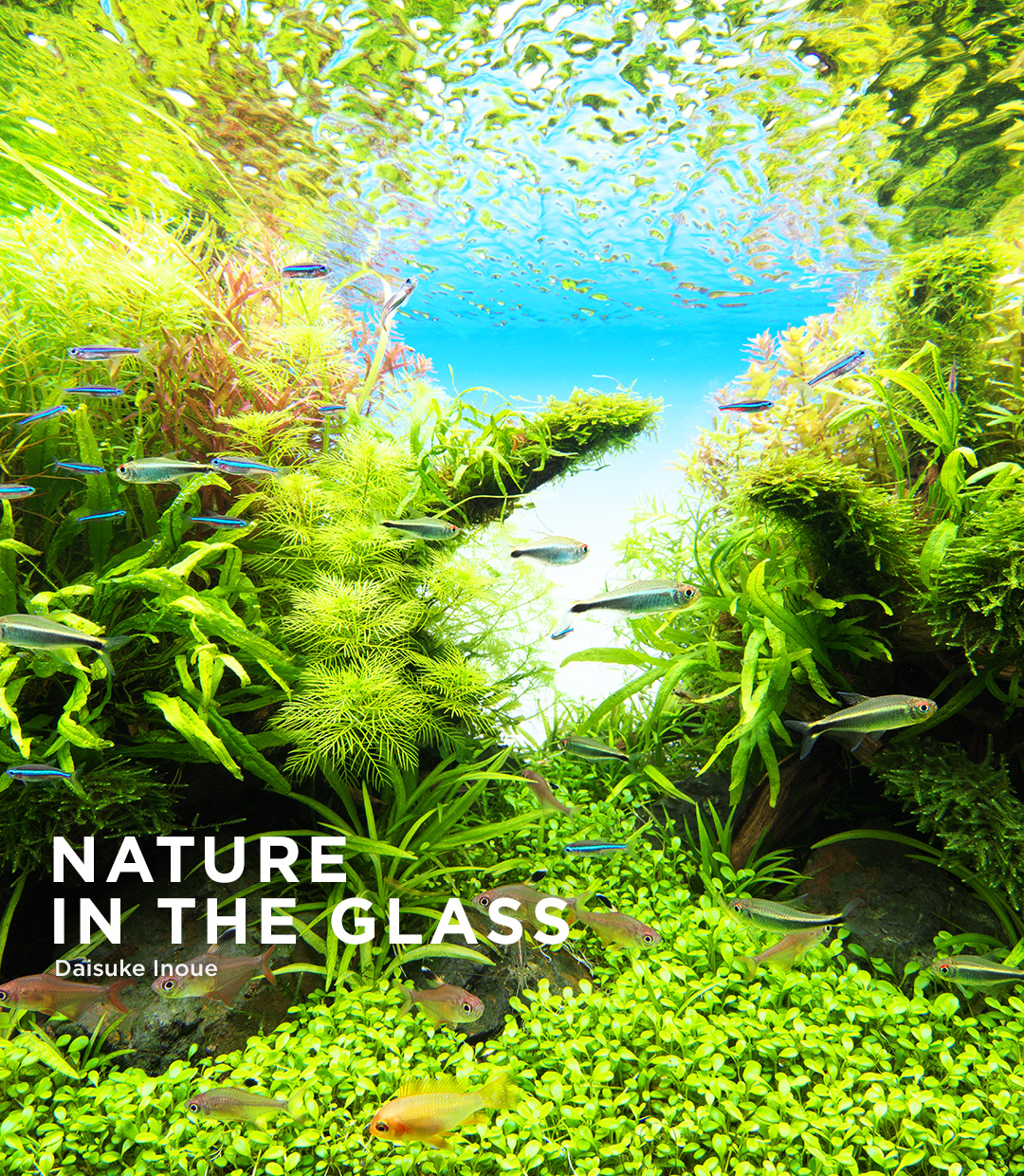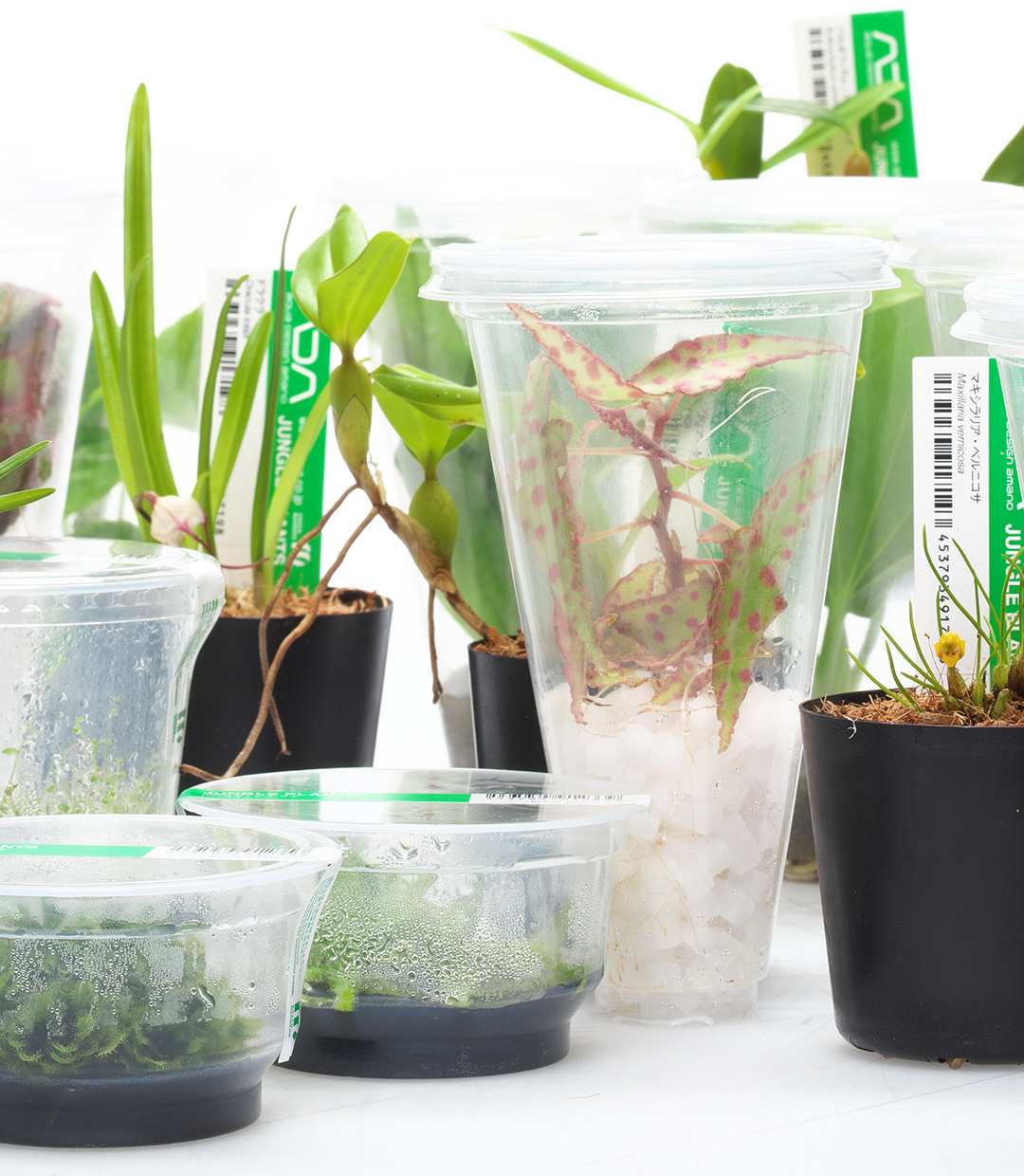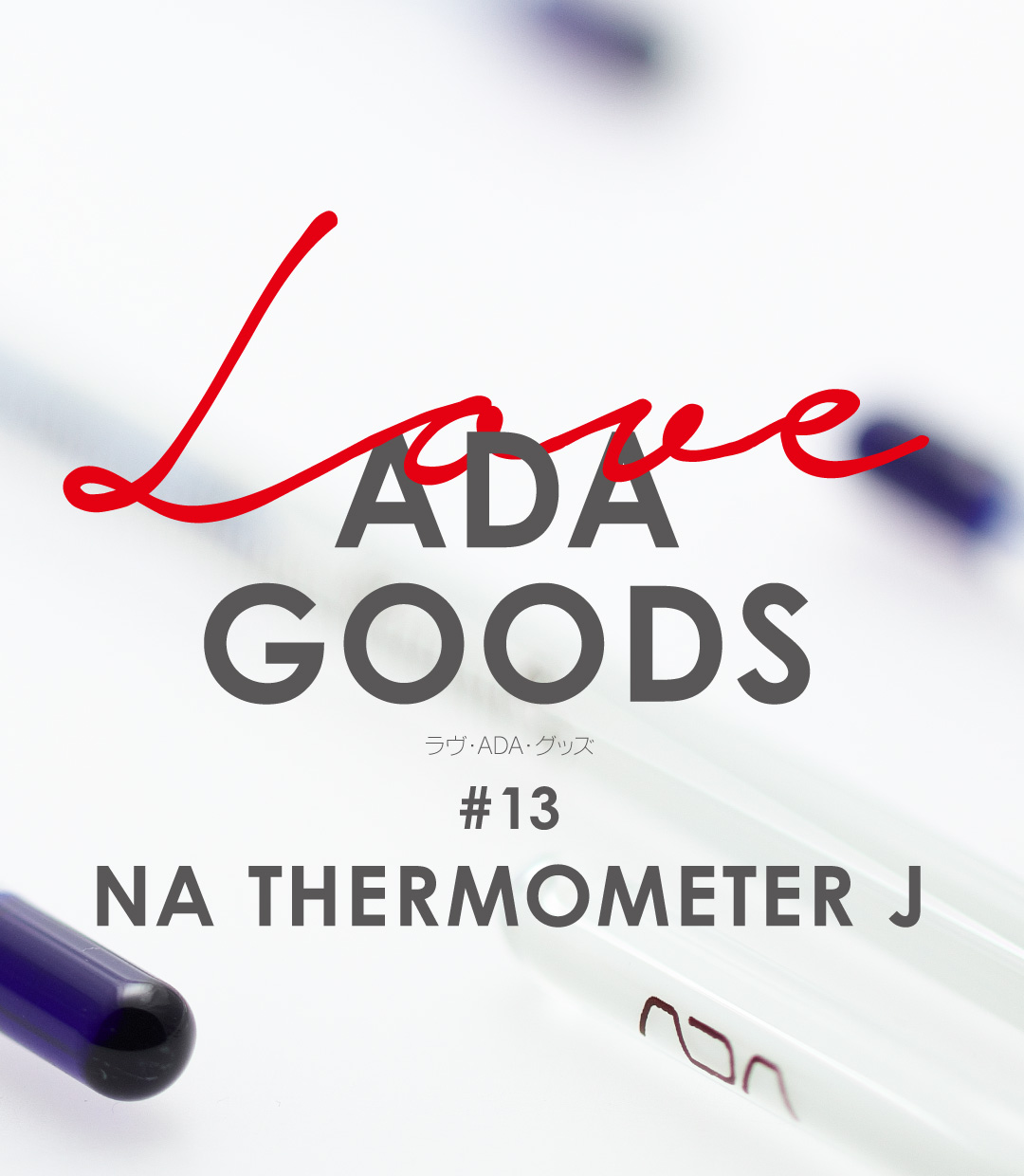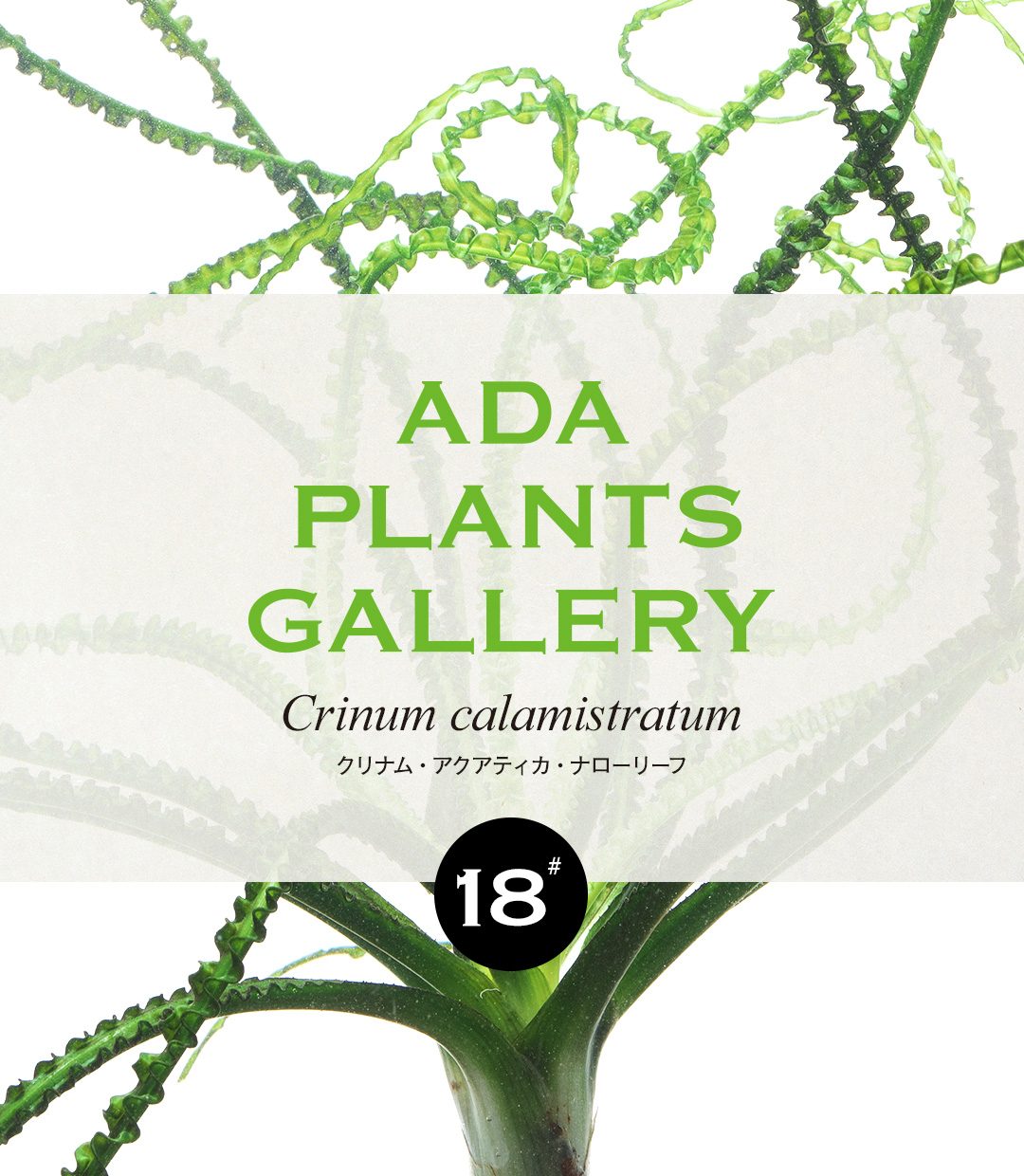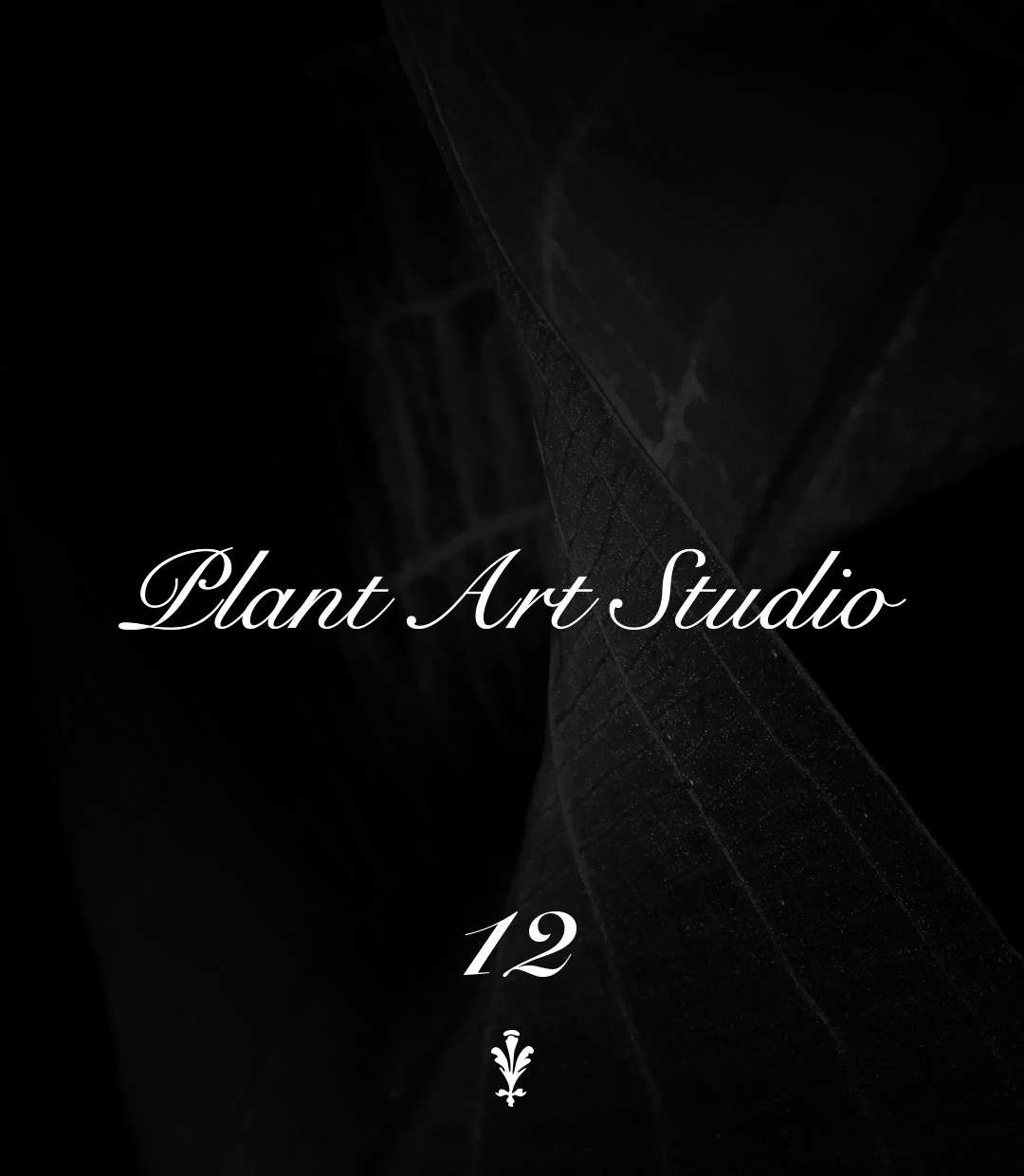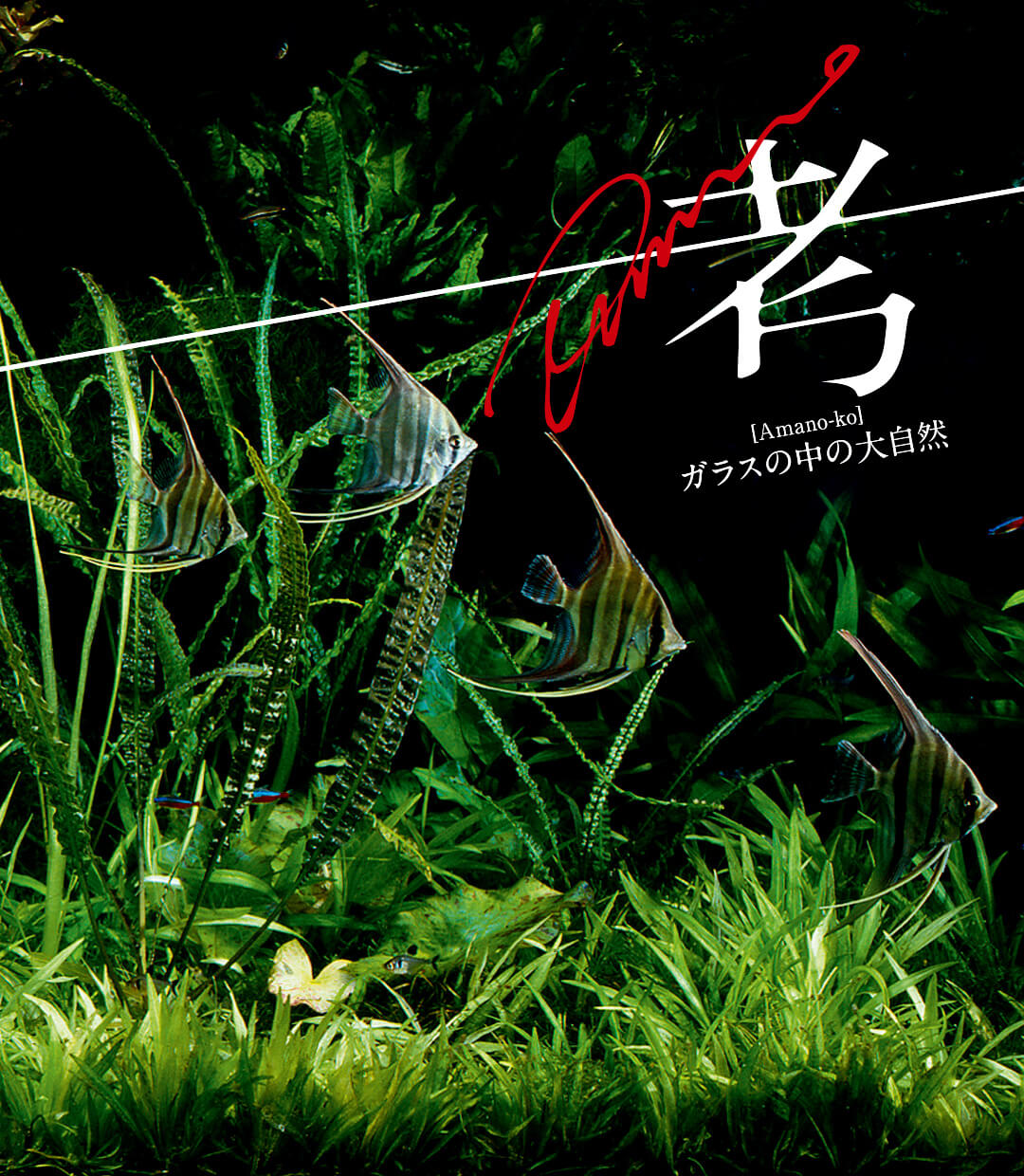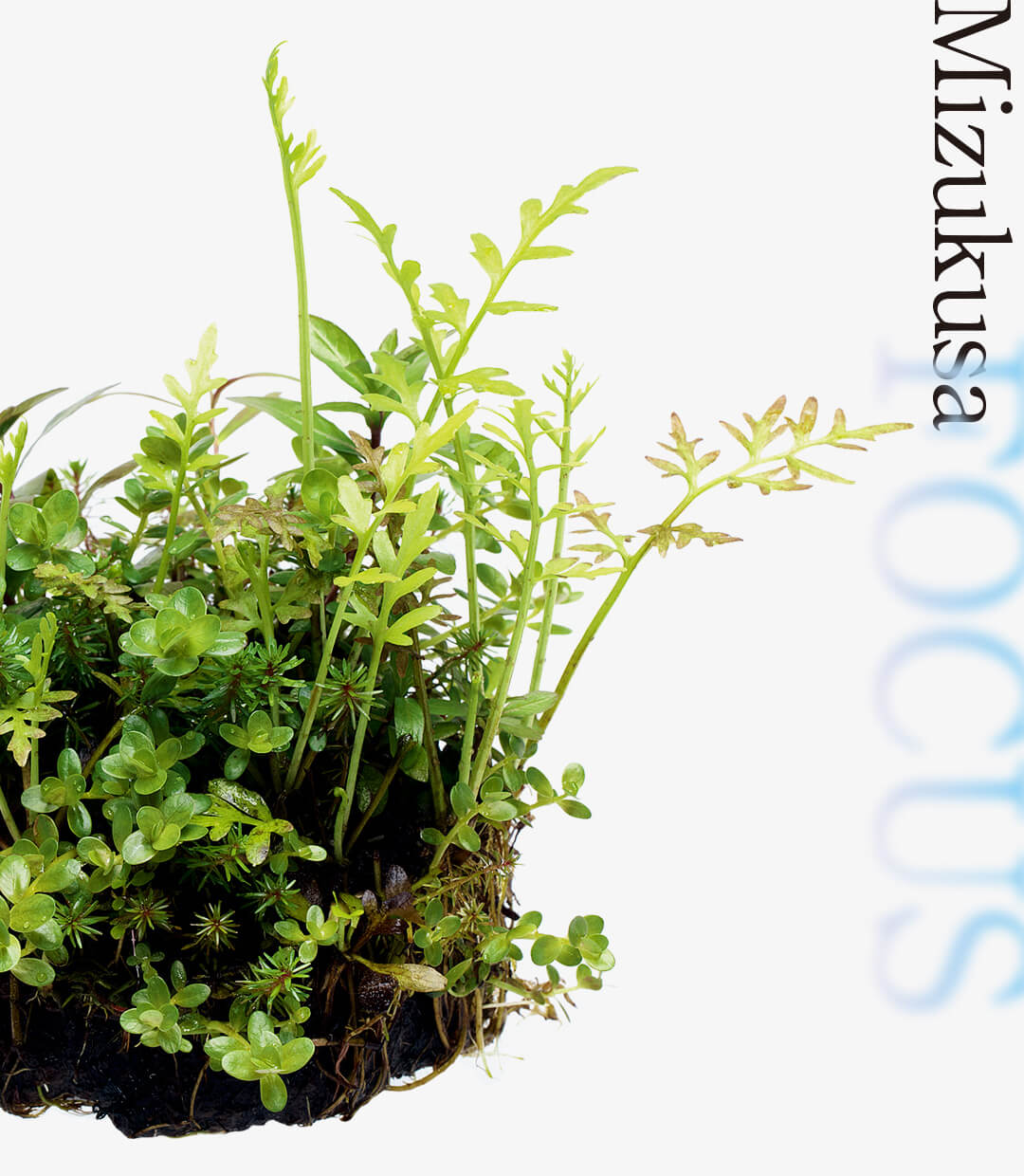NATURE IN THE GLASS “Light of Worlds”
[Light of Worlds]
This aquascape is the first example of using “Aquasky RGB II 60”, and my intention was to create “a bright aquascape with a familiar concave composition”. W600mm tanks seem small to me personally, perhaps because I have few opportunities to use them. In fact, its short depth tends to create a feeling of oppression, so I kept the compositional materials modest and secured more space for aquatic plants. The main aquatic plants are brightly colored stem plants and undergrowth, and moss is planted on driftwood to give sharpness to the aquascape.
This aquascape is the first example of using “Aquasky RGB II 60”, and my intention was to create “a bright aquascape with a familiar concave composition”. W600mm tanks seem small to me personally, perhaps because I have few opportunities to use them. In fact, its short depth tends to create a feeling of oppression, so I kept the compositional materials modest and secured more space for aquatic plants. The main aquatic plants are brightly colored stem plants and undergrowth, and moss is planted on driftwood to give sharpness to the aquascape.
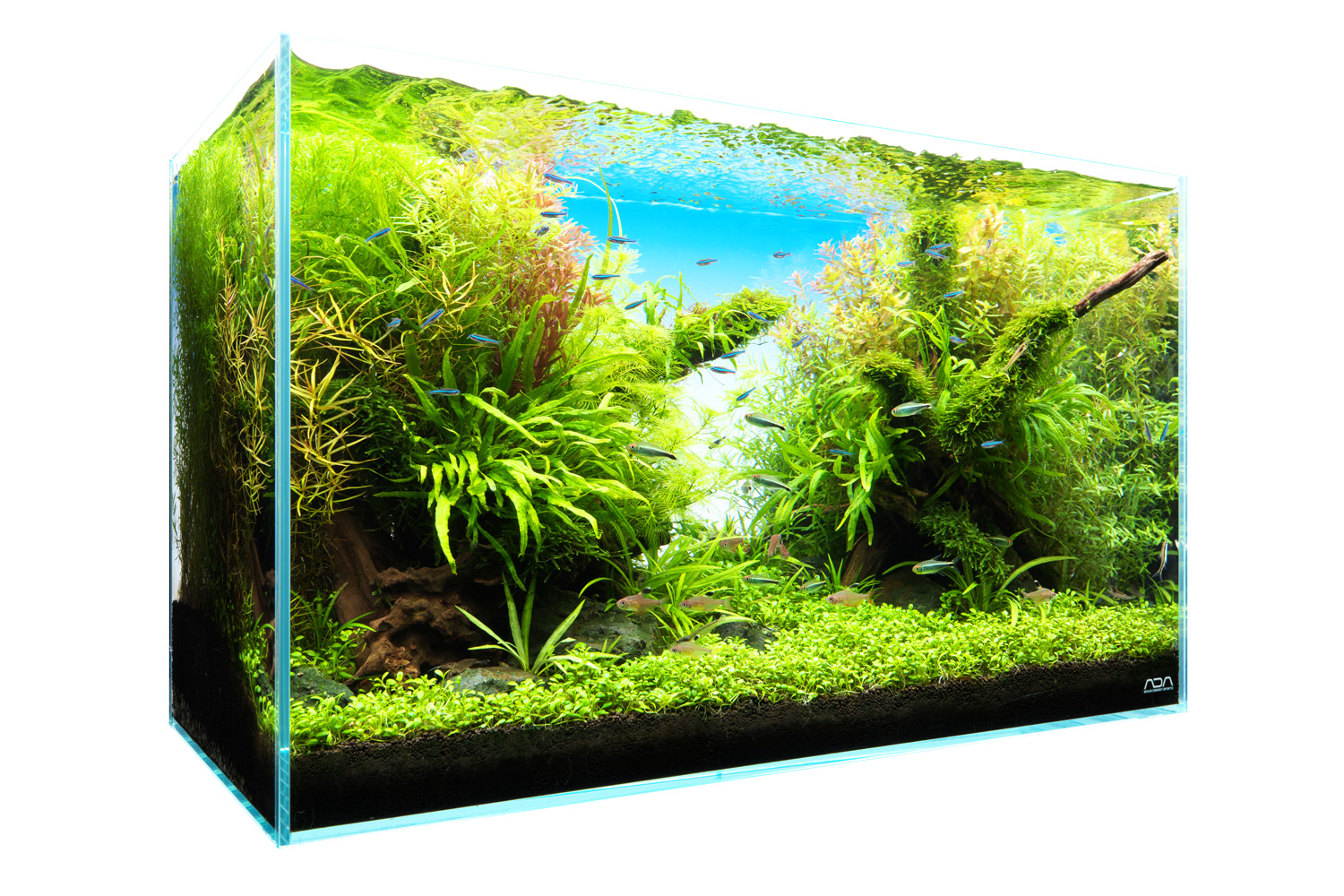
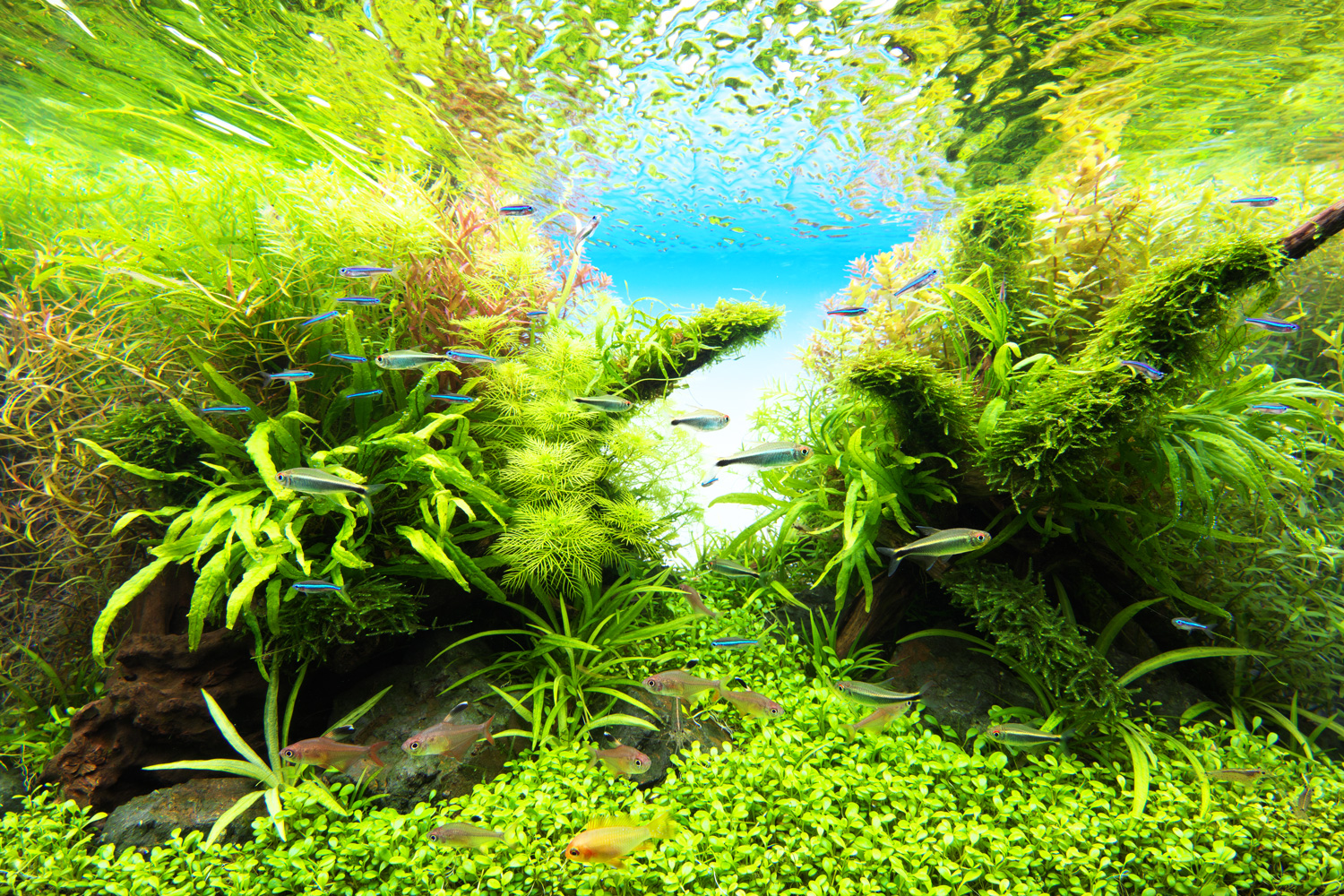
Aquatic plants and fish species selected with the new Aquasky RGB II 60 in mind
The greatest feature of the “Aquasky RGB II 60” is its ability to freely control the light color and intensity depending on the aquascapes. To make the effects clear, colorful aquatic plants and fish species were consciously selected for this aquascape. The recommended usage is to select the basic “Nature Aquarium” light at first, and then fine-tune the light depending on your preference of coloration.
The greatest feature of the “Aquasky RGB II 60” is its ability to freely control the light color and intensity depending on the aquascapes. To make the effects clear, colorful aquatic plants and fish species were consciously selected for this aquascape. The recommended usage is to select the basic “Nature Aquarium” light at first, and then fine-tune the light depending on your preference of coloration.
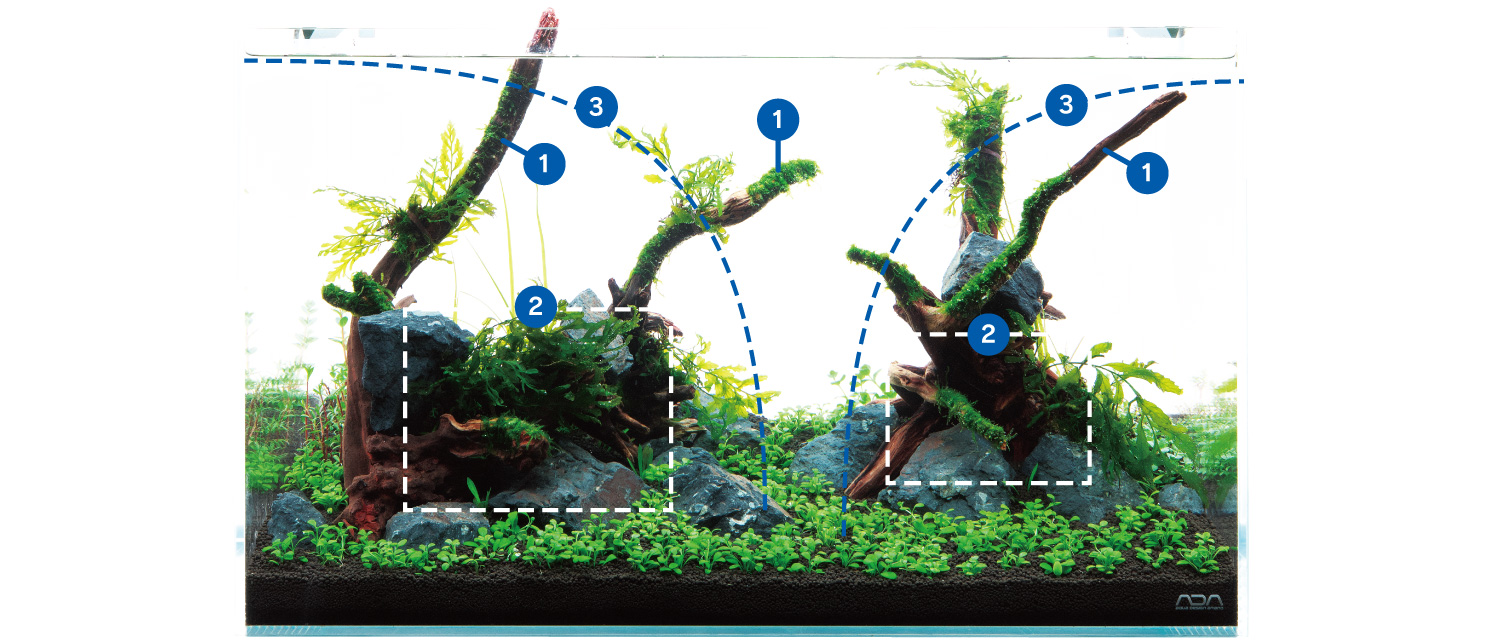
Point 1
Compositional framework with Slim Wood
Slim Wood is better suited for forming a shape by assembling several pieces together rather than placing them individually to form a shape. I created a concave compositional framework by assembling several pieces on the left and right sides, and by opening a space in the center, I created a bright impression.
Compositional framework with Slim Wood
Slim Wood is better suited for forming a shape by assembling several pieces together rather than placing them individually to form a shape. I created a concave compositional framework by assembling several pieces on the left and right sides, and by opening a space in the center, I created a bright impression.
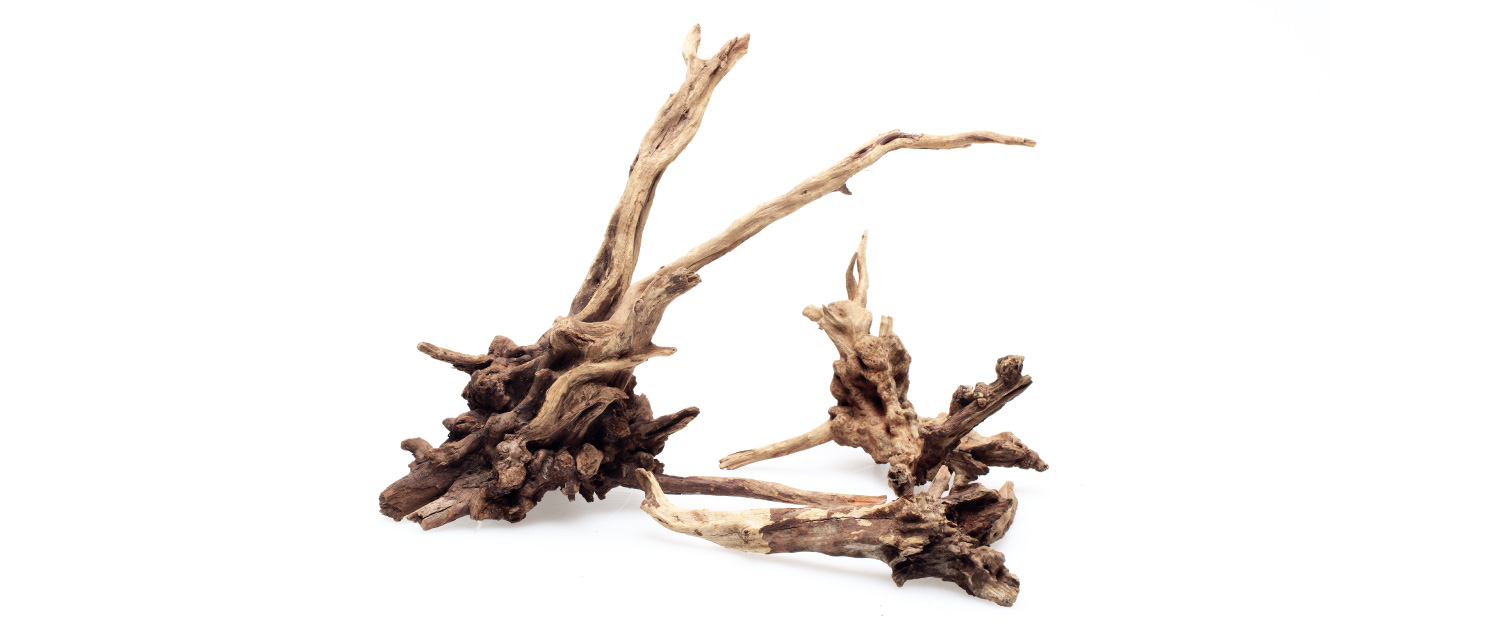
Point 2
Planting in the middle ground to creat a bright impression
Echinodorus grisebachii is planted at the base of the driftwood. The area tends to be dark, but the light green color gives a bright impression. Microsorum sp. ‘Trident’ with similar foliage color was also planted in a relatively dark area (changed from the original Bolbitis).
Planting in the middle ground to creat a bright impression
Echinodorus grisebachii is planted at the base of the driftwood. The area tends to be dark, but the light green color gives a bright impression. Microsorum sp. ‘Trident’ with similar foliage color was also planted in a relatively dark area (changed from the original Bolbitis).
Point 3
Planting in the background while taking advantage of the characteristics of stem plants
Trimming-resistant stem plants with a strong tendency to creep are planted in the center and in front of the bushes, and stem plans that tend to grow upward are planted behind the bushes. In addition, each of the stem plants was made to stand out by ensuring that the color and shape of the leaves do not overlap the species that were next to each other.
Planting in the background while taking advantage of the characteristics of stem plants
Trimming-resistant stem plants with a strong tendency to creep are planted in the center and in front of the bushes, and stem plans that tend to grow upward are planted behind the bushes. In addition, each of the stem plants was made to stand out by ensuring that the color and shape of the leaves do not overlap the species that were next to each other.
